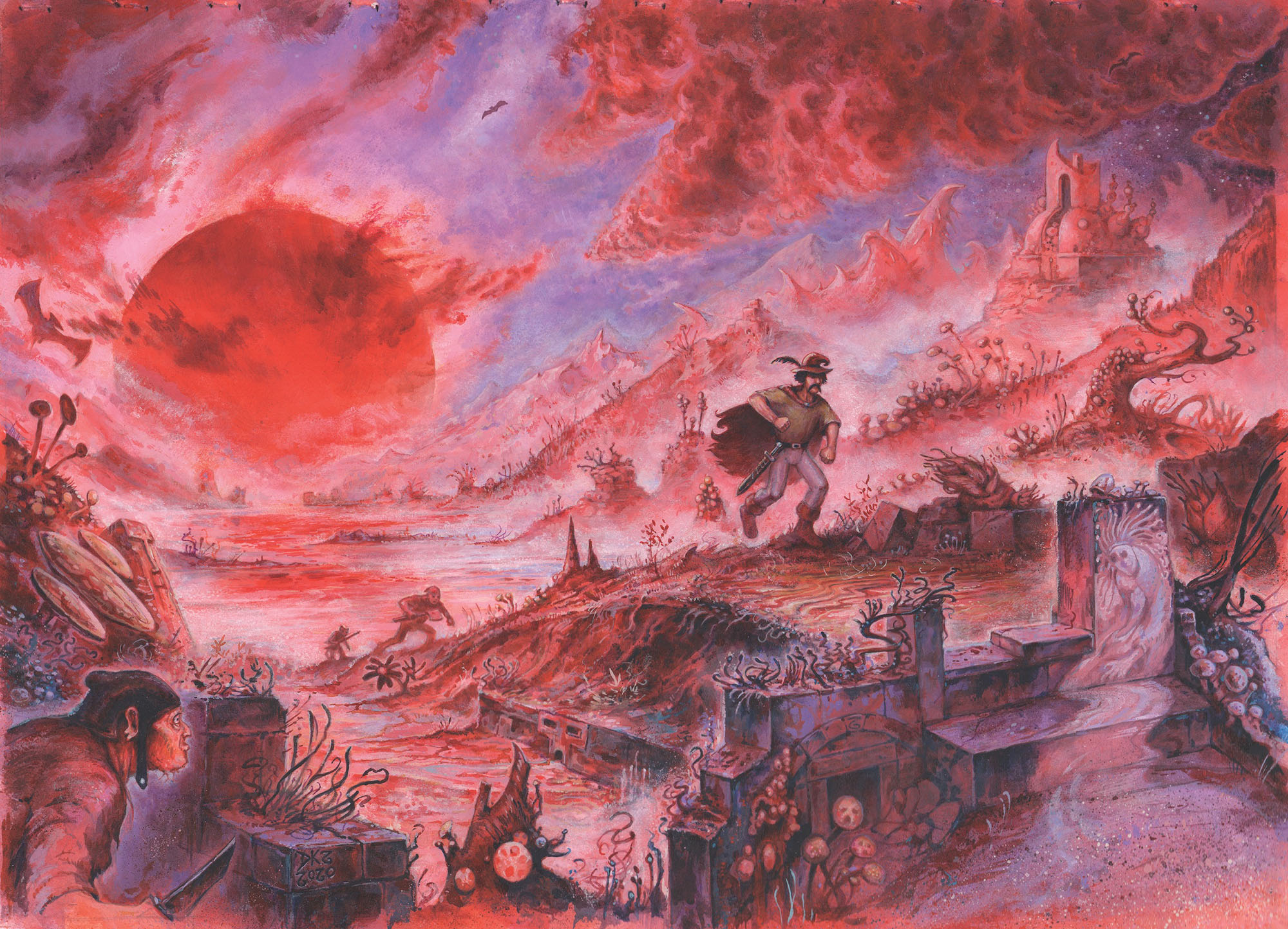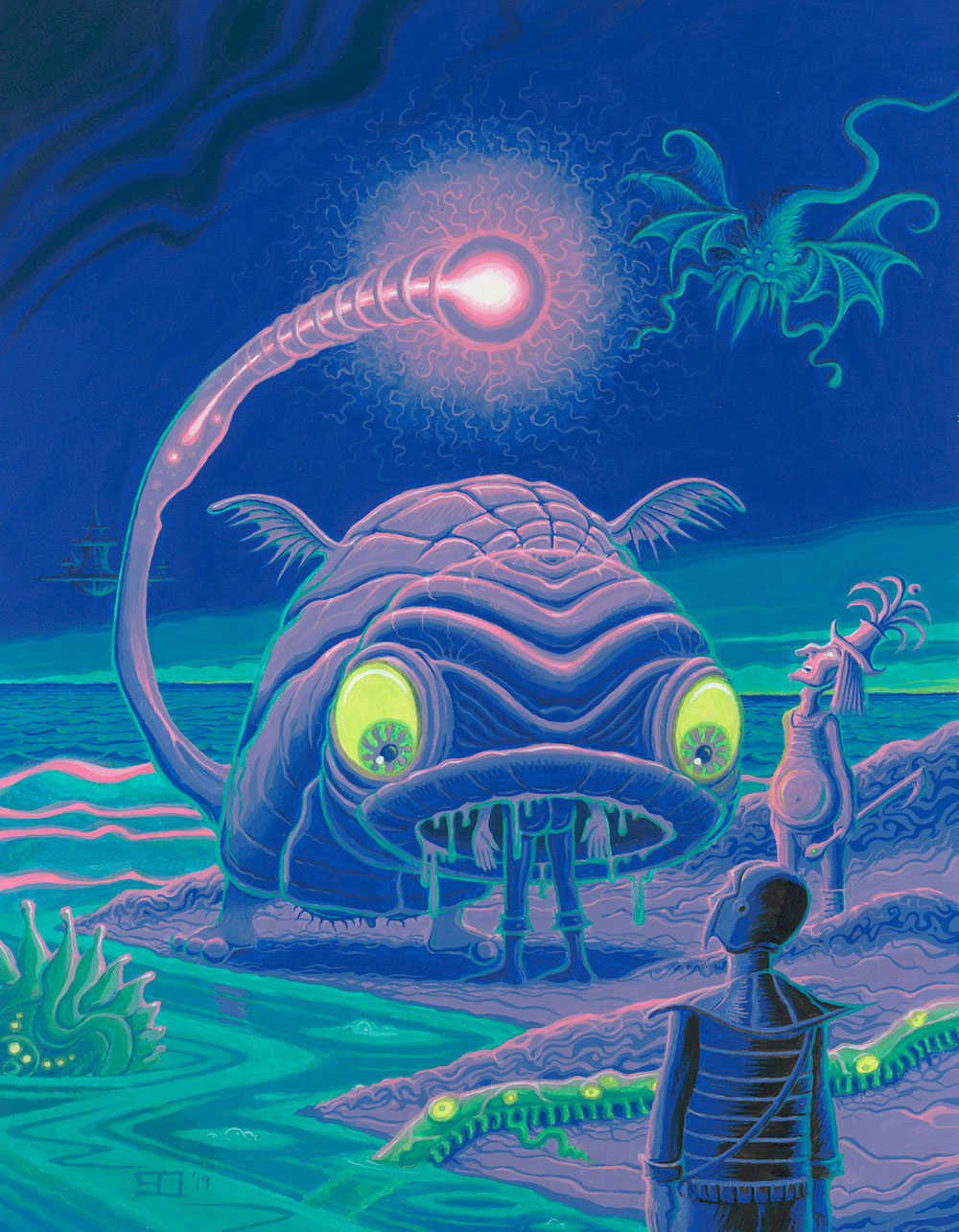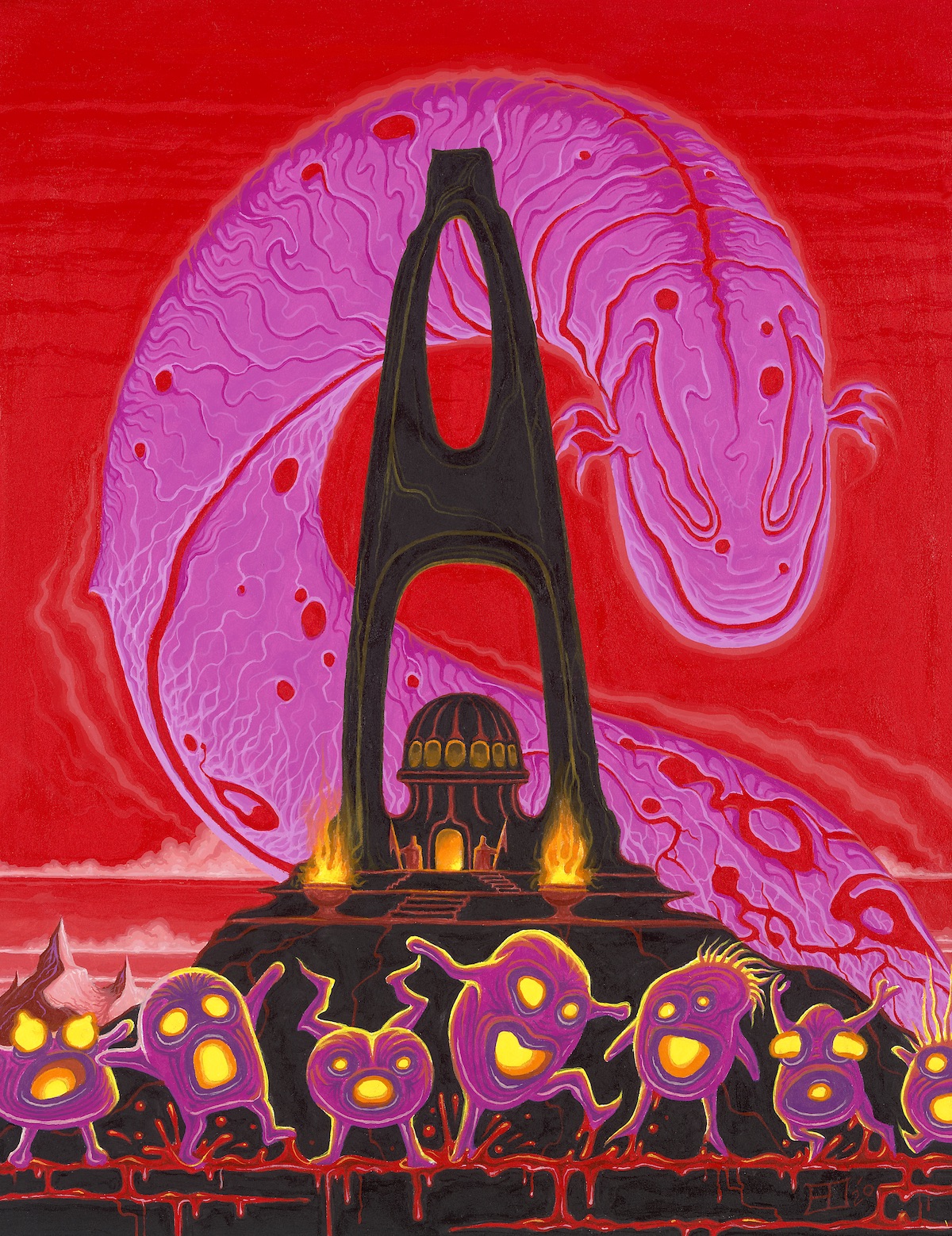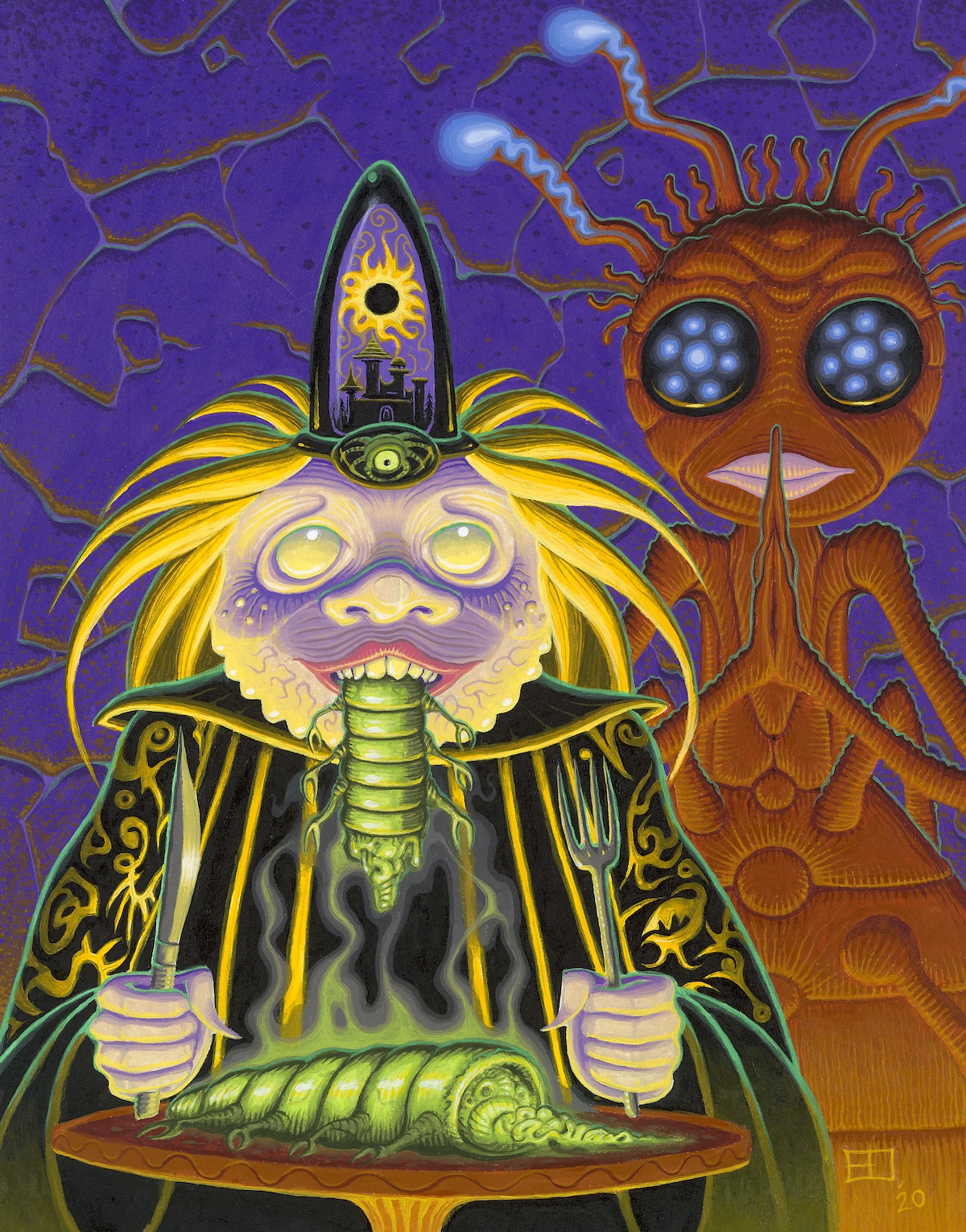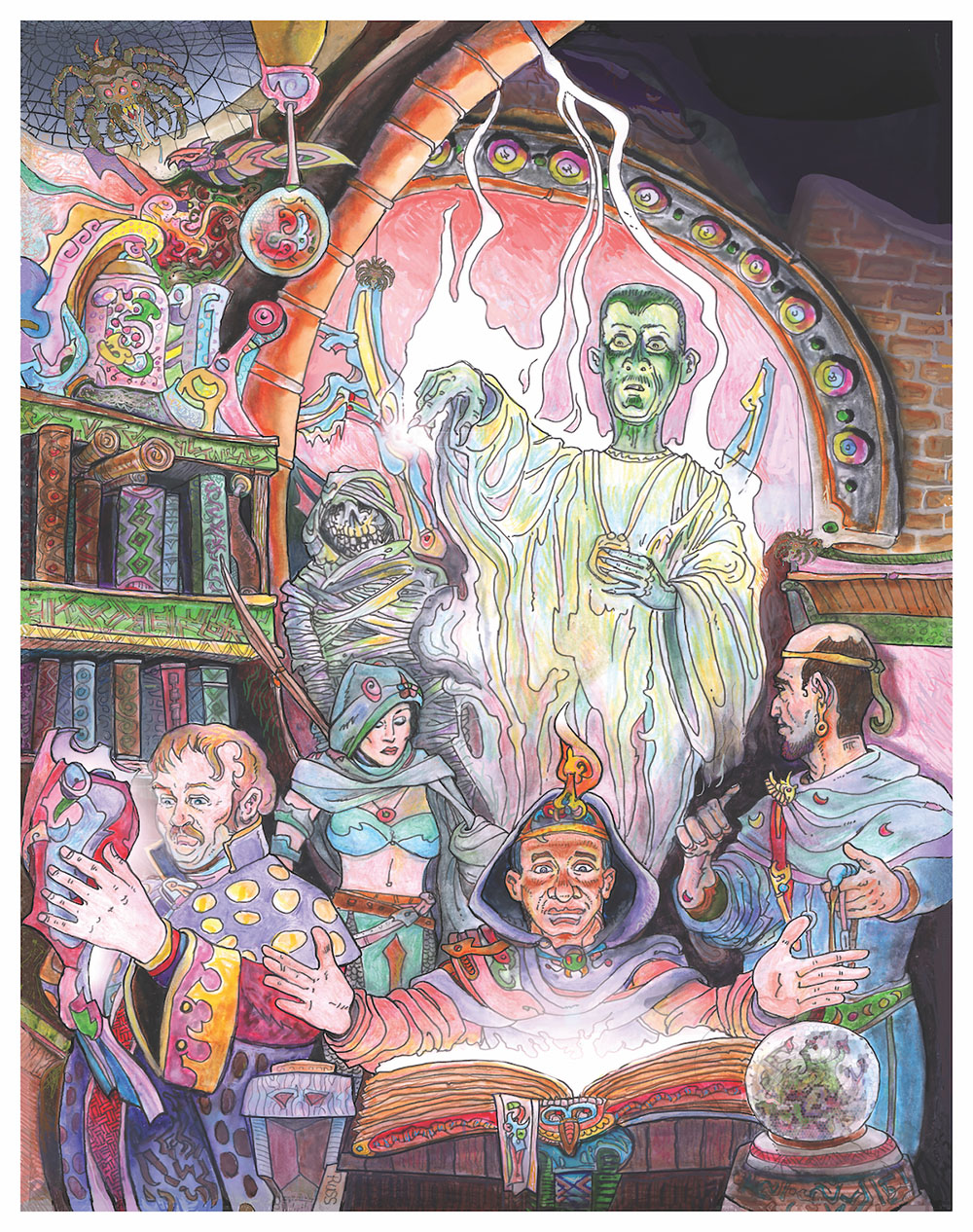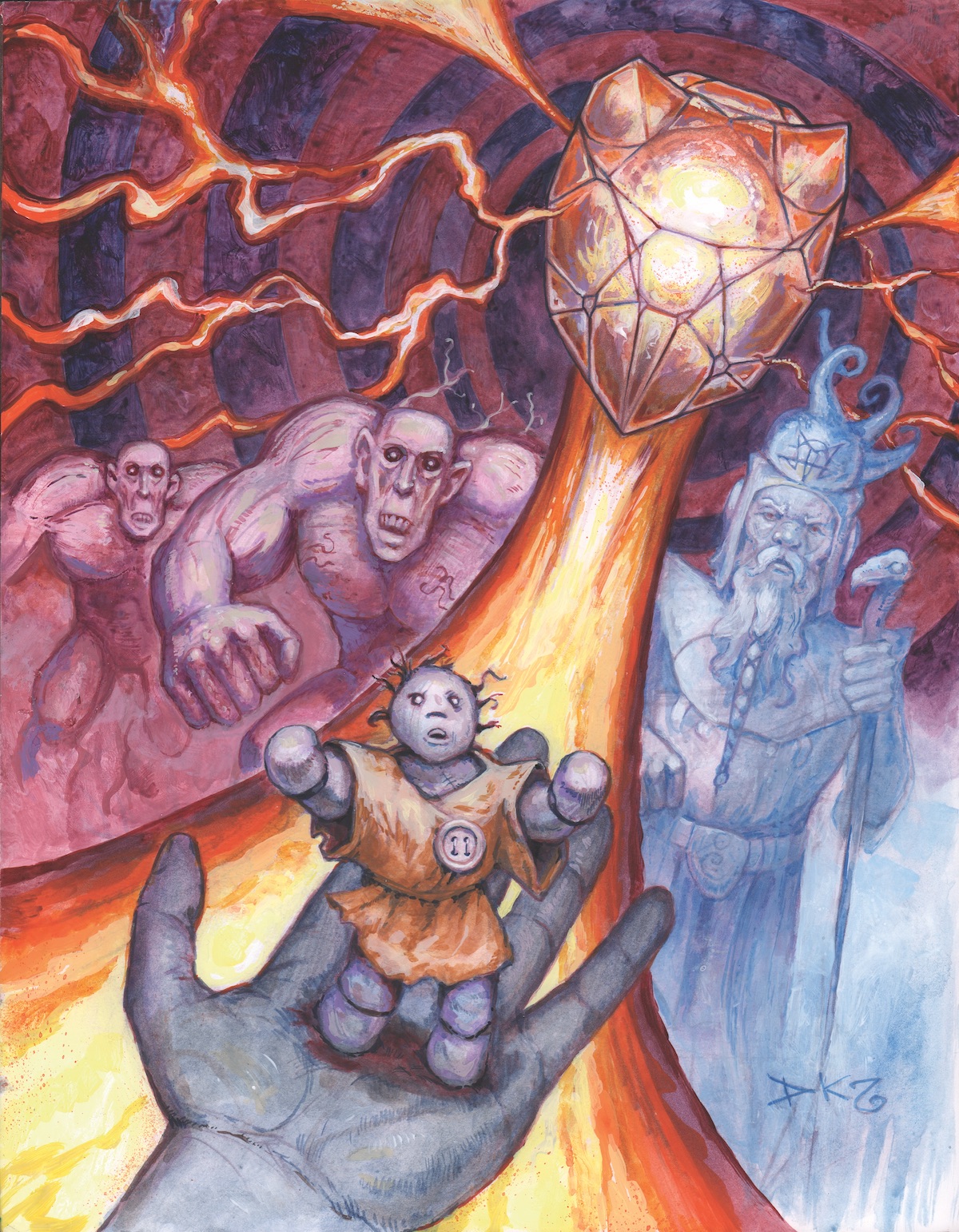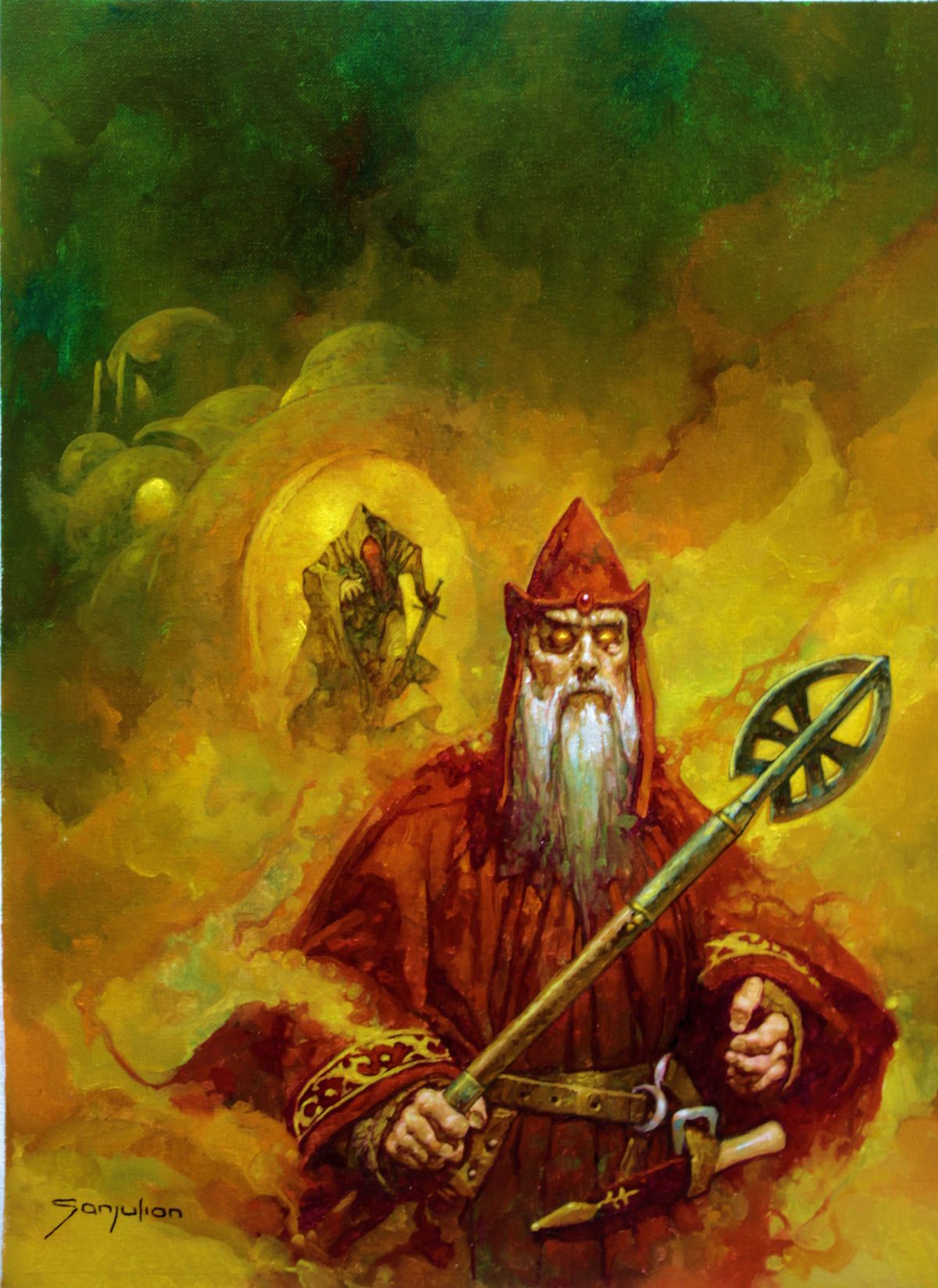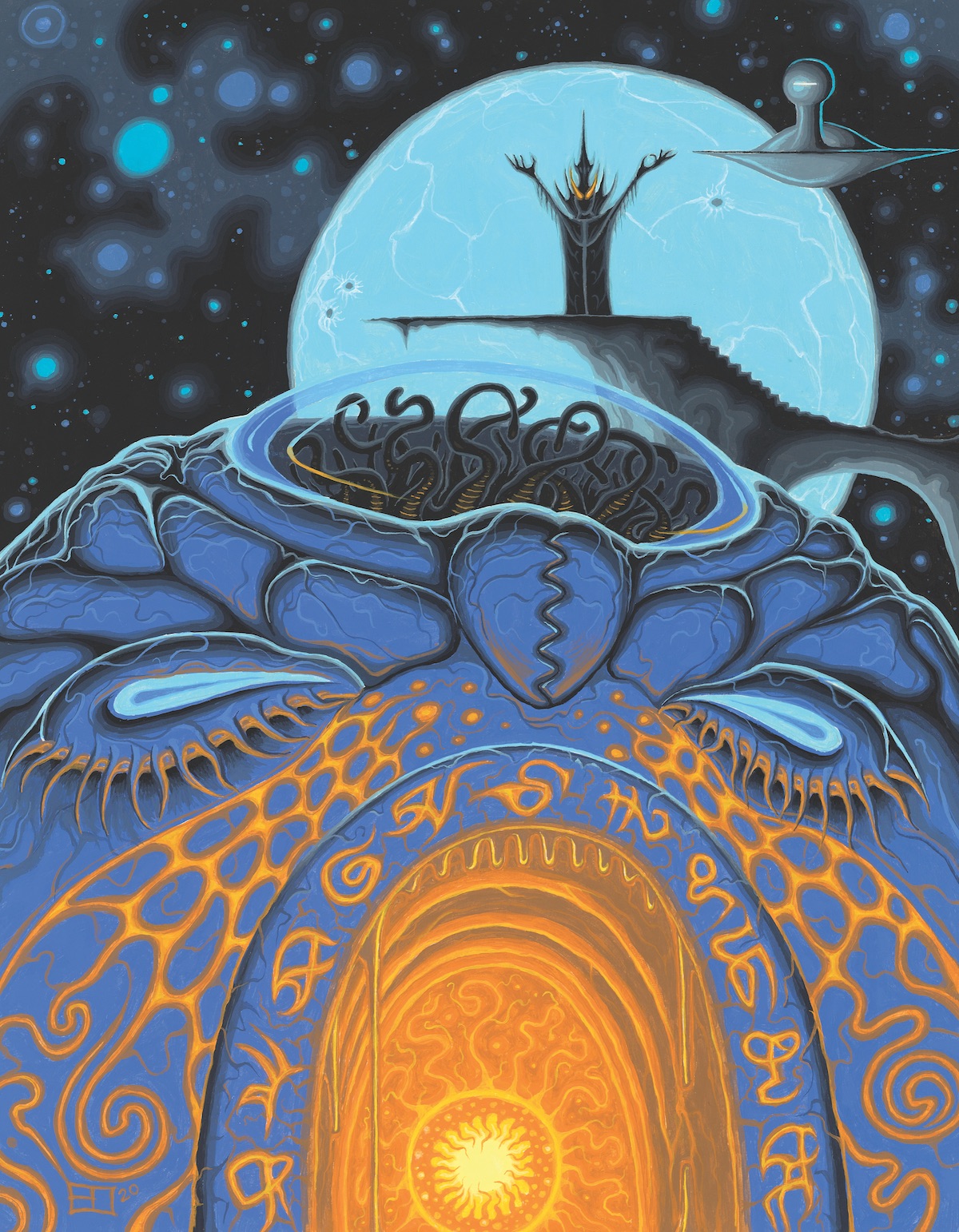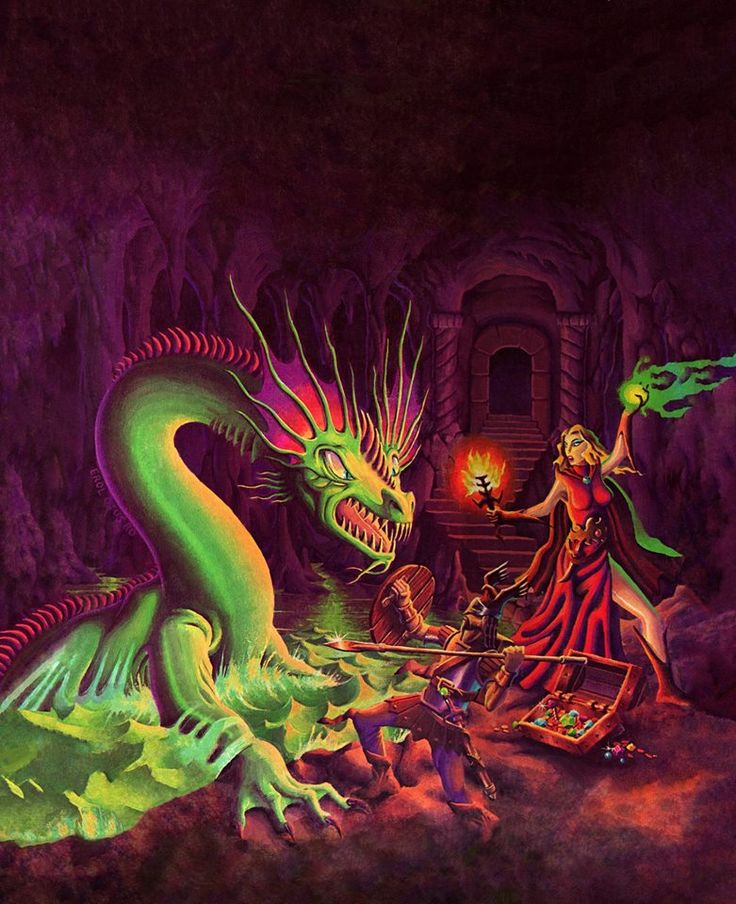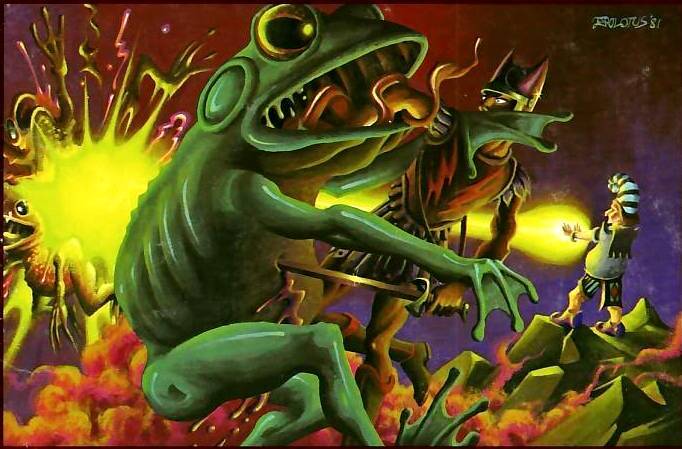For a little over a year now or so, I started getting more involved with retroclones and modules labelling themselves as osr.
Before that, I was on a loong D&D hiatus after AD&D 2nd and played TDE, Whfrp, Dungeonworld,... instead. Never touched 3e/3.5e/PF (or a videogame based on them), their direction towards boardgames/MMOs just didn't resonate with me. So, basically it's not a revival for me - what's described in the often-quoted old-school primer is basically how I always did it.
One of the trends I notice in the OSR scene is the fixation on random tables, I'd go as far as calling it glorifying. Now, I get how encounter tables and loot tables are incredibly useful, as well as having a table with random names typical for the region, so that not every NPC the PCs encounter is called 'John'. But during a session I try to limit the amount of tables, because after a certain number it just becomes a mess and slows down play. Before I roll how the coat-of-arms of the randomly bypassing knight looks like, I just make it up on the spot.
But every so often I stumble across tables that make me wonder - is this really helping people to have a great pen&paper session? Case in point: stuff like Matt Finch's "Tome of adventure design" which is universally praised it seems, but I really don't see much value. Two (well-written!) pages of how a good adventure should be structured, followed by dozens of pages just with tables.
So after rolling several d100, I end up with a scenario idea: The adventurers are sent to the Spiraling Pyramid of the Cabbalistic Staute, once known as Orb-Cairn of the Flame Monster to take the leadership in the assassination of the story's villain. They are hired by a victim of slander who wants to rescue a business rival and made a post on the billboard with the mission. A motivation for them could be that they are rewarded with an improvement of their physical appearance. The villain himself is driven by the desire to increase his personal capabilities by stealing from a person who has a magic item...
Okay, those were ~20 pages in and I'm not impressed. I feel like it would cost me more brainpower and time to expand this into a useful hook in a way that it does not feel like everything was chosen purely random, than just to make up something from the ground up entirely.
Another example - I recently read a module (it was a shitty hipster 1 page dungeon for a shitty hipster system, but the pattern is ubiquitous across the whole scene) taking place in an asylum. Instead of coming up with a selected few NPCs that could make for interesting encounters, the author just threw in some tables and told the reader basically to just roll the NPC's insanity. Come on, that's super lazy!
I don't want to make an argument here, I am genuinely interested how people are using such tables.
Are you using that stuff live on the table? Like "Sorry GM, our PC's don't feel like going after any one of your hooks" - "Okay let me roll something new on the spot".
Do you roll up an adventure entirely just the way I described above, then take a long walk and ponder on how to make a good hook out of the nonsense?
Or do you just use individual tables and look through the possible results when you just can't for the love of it come up with an idea for a name, a motivation or a patron that is not cliché for an otherwise 100% handcrafted scenario? Sorry for the wall of text






